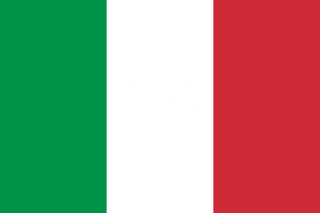
The Italian Social Republic, known prior to December 1943 as the National Republican State of Italy, but more popularly known as the Republic of Salò, was a Nazi-German puppet state with limited diplomatic recognition that was created during the latter part of World War II, which existed from the beginning of the German occupation of Italy in September 1943 until the surrender of German troops in Italy in May 1945. The German occupation triggered widespread national resistance against it and the Italian Social Republic, leading to the Italian Civil War.

Ugo Cavallero was an Italian military commander before and during World War II. He was dismissed from his command due to his lacklustre performance, and was arrested upon the fall of Benito Mussolini's regime. Cavallero was later freed by the Germans, but refused to collaborate and was found dead the following day.
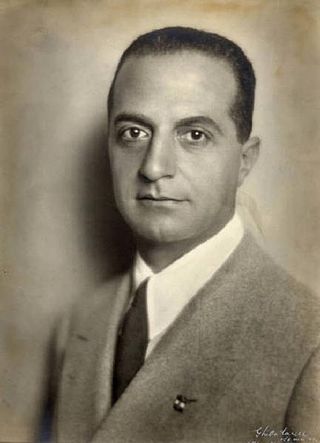
Giuseppe Bottai was an Italian journalist and member of the National Fascist Party of Benito Mussolini.

Edda Ciano, Countess of Cortellazzo and Buccari was the daughter of Benito Mussolini, fascist Prime Minister of Italy from 1922 to 1943. Her husband, the fascist propagandist and Foreign Minister Galeazzo Ciano, was executed in January 1944 for his role in Mussolini's ouster. She strongly denied her involvement in the National Fascist Party regime after her father's execution by the Italian partisans in April 1945.

The emblem of the Italian Republic was formally adopted by the newly formed Italian Republic on 5 May 1948. Although often referred to as a coat of arms, it is an emblem as it was not designed to conform to traditional heraldic rules. The emblem is used extensively by the Italian government.

The Order of the Crown of Italy was founded as a national order in 1868 by King Vittorio Emanuele II, to commemorate the unification of Italy in 1861. It was awarded in five degrees for civilian and military merit. Today the Order of the Crown has been replaced by the Order of Merit of Savoy and is still conferred on new knights by the current head of the house of Emanuele Filiberto, Prince of Venice.

The Order of Saints Maurice and Lazarus is a Roman Catholic dynastic order of knighthood bestowed by the royal House of Savoy. It is the second-oldest order of knighthood in the world, tracing its lineage to AD 1098, and it is one of the rare orders of knighthood recognized by papal bull, in this case by Pope Gregory XIII. In that bull, Pope Gregory XIII bestowed upon Emmanuel Philibert, Duke of Savoy and his Savoy successors, the right to confer this knighthood in perpetuity. The Grand Master is Prince Emanuele Filiberto of Savoy, Prince of Venice, also known as the Duke of Savoy, the grandson of the last King of Italy, Umberto II. However, Emanuele Filiberto's cousin twice removed Prince Aimone, Duke of Aosta claims to be grand master as his father claimed to be head of the house of Savoy.
Il Popolo d'Italia was an Italian newspaper published from 15 November 1914 until 24 July 1943. It was founded by Benito Mussolini as a pro-war newspaper during World War I, and it later became the main newspaper of the Fascist movement in Italy after the war. It published editions every day with the exception of Mondays.

First Marshal of the Empire was a military rank established by the Italian Parliament on March 30, 1938. The highest rank in the Italian military, it was only granted to King Victor Emmanuel III and Duce Benito Mussolini.

Ubaldo Soddu was an Italian general and politician who held the position of Deputy Chief of Staff of the Army and Undersecretary of State for War during the initial phases of World War II. On 13 June 1940, immediately after the outbreak of hostilities with France and the United Kingdom, he assumed the position of deputy chief of the General Staff. Promoted to army general, he replaced general Sebastiano Visconti Prasca as commander of the Albanian Higher Troop Command during the Greco-Italian War on 8 November 1940. Because of the defeat Italian troops suffered between 22 and 23 November 1940, he was replaced after four weeks in command by the Italian Royal Army's chief of staff, General Ugo Cavallero.
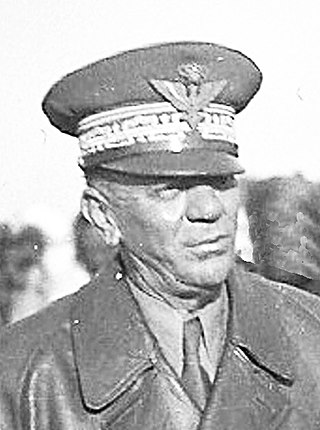
Luigi Frusci was an Italian military officer in the Italian Royal Army during the Italian conquest of Ethiopia and World War II. He was the last Italian Governor of Eritrea and Amhara.

Walter Audisio was an Italian partisan and communist politician, also known by his nom-de-guerreColonel Valerio. A member of the Italian resistance movement during World War II, Audisio was involved in the death of Benito Mussolini, and personally executed the dictator and his mistress Clara Petacci according to the generally accepted account of the event.

Benito Amilcare Andrea Mussolini was an Italian dictator who founded and led the National Fascist Party (PNF). He was Prime Minister of Italy from the March on Rome in 1922 until his deposition in 1943, as well as Duce of Italian fascism from the establishment of the Italian Fasces of Combat in 1919 until his summary execution in 1945 by Italian partisans. As dictator of Italy and principal founder of fascism, Mussolini inspired and supported the international spread of fascist movements during the inter-war period.
The Royal Academy of Italy was a short-lived Italian academy of the Fascist period. It was created on 7 January 1926 by royal decree, but was not inaugurated until 28 October 1929. It was effectively dissolved in 1943 with the fall of Mussolini, and was finally suppressed on 28 September 1944. All of its functions and assets, including the Villa Farnesina, were passed to the Accademia Nazionale dei Lincei. Until 25 April 1945 it continued some activity in the Villa Carlotta on Lake Como near Tremezzo in Lombardy.

The Italian racial laws, otherwise referred to as the Racial Laws, were a series of laws promulgated by the government of Benito Mussolini in Fascist Italy from 1938 to 1944 in order to enforce racial discrimination and segregation in the Kingdom of Italy. The main victims of the Racial Laws were Italian Jews and the African inhabitants of the Italian Empire.
The Civil Order of Savoy was founded as an order of knighthood in 1831 by the King of Sardinia, Charles Albert, Duke of Savoy. It is now replaced by the Order of Merit of Savoy.The intention was to reward those virtues not belonging to the existing Military Order of Savoy, founded by Vittorio Emanuele I in 1815. The order has one degree, that of Knight, and is limited to 70 members. Admission is in the personal gift of the head of the House of Savoy.
Giuseppe Daodice was an Italian general. He was the 6th Italian governor of Addis Ababa and 3rd Italian governor of Scioa (1940–1941). He was a knight of the Order of Saints Maurice and Lazarus.
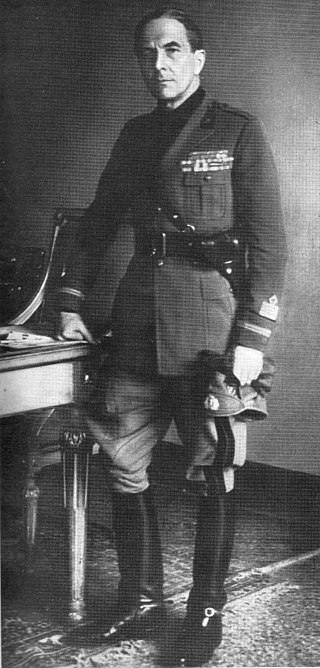
Carlo Emanuele Basile was an Italian Fascist politician and writer. He held various high-raking offices within the National Fascist Party during the interwar period, and during the Italian Social Republic he served as prefect of Genoa and Undersecretary for the Armed Forces.
The Badge of Honor for the "Volunteers of Freedom" Patriots is an award established by the Kingdom of Italy to recognize those who participated in the armed struggle of the Italian resistance movement or Italian Co-belligerent Forces against Axis forces in Italy during World War II or who refused to collaborate with Axis forces after being taken prisoner by Nazi Germany.
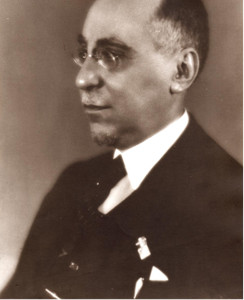
Santi Romano was an Italian public lawyer, who taught administrative law, constitutional law, ecclesiastical law and international law in several Italian universities. He was President of the Council of State from 1928 to 1944 and Senator of the Kingdom from 1934, as well as member of the Lincean Academy.
















